I married my husband, Ron Stoneham, on August 8, 2009. Guido Calabresi, a federal appellate judge, performed the ceremony on his farm in Woodbridge, Connecticut. Guido was dean when I enrolled as a student at Yale Law School. By the time I graduated in 1996, President Clinton had appointed him to the Second Circuit Court of Appeals. I worked for him after graduation as a clerk, then joined the Yale Law School faculty. He mentored me on the path to tenure, which I received in 2003. In 2006, I became the inaugural Guido Calabresi Professor of Law. My husband ribs me for having taken Guido's name but not his.
Guido took me and Ron aside before the ceremony. At the time, Connecticut recognized same-sex marriage, but the federal government did not, due to a law styled the Defense of Marriage Act. Guido said: "You're the first same-sex couple I've married. When I've married couples in the past, I've always said, 'By the power vested in me by the state of Connecticut and the United States of America, I now pronounce you married.' Now, because of DOMA, I can't marry you under federal law. But I also can't find it in my heart to treat you differently from any other couple." The skin around his blue-gray eyes crinkled with lawyerly pleasure. "So when I speak of 'the power vested in me by the United States of America,' I will be referring to my authority as a federal judge to marry you under state law. But the words will remain the same."
Then he hugged us. I could feel his heart beating through his judge's robe. I thought how odd it was to be embraced by the law. The great law professor Robert Cover wrote that judges sit atop a pyramid of violence "dealing pain and death." Usually, being "apprehended" by the law is a terrifying experience. Yet at that moment, I understood marriage as the rare place where law and love converge.
Marriage is a major life event for most people. Yet I think it still carries an extra jolt of wonder for same-sex couples. It runs so counter to what we have been told about the lives possible for us. I was born in 1969, the year of the Stonewall Riots. Had I been born a generation earlier, or in a different country, my current life would be unimaginable. Monique Wittig, born in 1935, wrote in 1980 that the heterosexual contract was simple: "you-will-be-straight-or-you-will-not-be." Paul Monette, born in 1945, wrote in his 1992 memoir: "Until I was twenty-five, I was the only man I knew who had no story at all. I'd long since accepted the fact that nothing had ever happened to me and nothing ever would." Andrew Sullivan, born in 1963, gave the gay community more hope in his indispensable 1995 work Virtually Normal, which argued for same-sex marriage. Yet even that manifesto ended by touting how the tendency of gay people not to have families of our own benefited society: "The displacement of family affection onto a broader community also makes the homosexual an ideal person to devote him- or herself to a social institution: the university, the school, the little league, the Boy Scouts, the church, the sports team." He concluded: "Scratch most of these institutions and you'll find a homosexual or two sustaining many of its vital functions."
I remember reading Sullivan's book when it was published. I had just embarked on my legal career. While I did not consciously take his words as a prescription for my life, I recognized that they captured how many expected me to live. Yale was then considered the Ivy with the highest gay population (as one wag put it: "One in four, maybe more; one in three, maybe me; one in two, maybe you!"). Yet even pro-gay colleagues would ask if I wanted a family, in a twist on how my straight female classmates would be asked if they wanted a career. In 1998, many colleagues assumed I would not settle down or have children. One encouraged me to become dean because I would have no family to balance against the rigors of the job.
These expectations fulfilled themselves. I repeatedly chose work over relationships. Work brought pleasure -- stature, awards, promotions, raises. Relationships caused pain in my family of origin, and, because of my own internal conflicts, in me. Put differently, achievements that might seem unusual -- attending good schools, getting tenure, writing books -- have seemed relatively ordinary to me. Because I had been given every advantage growing up, these paths were marked. In contrast, the more common milestones -- falling in love, marrying, raising children -- seemed unattainable. Long after I achieved tenure, I retained a devotional relationship to my career. I worked every weekend, accepted every committee assignment, and assumed extra student supervisions. The school handsomely rewarded me. Still, I risked marrying an institution.
Thankfully, this changed in my thirties. While such atmospheric shifts are hard to pinpoint, I think of 2003, when the United States Supreme Court struck down criminal bans on sodomy and, in the wake of that decision, the Massachusetts high court issued a decision legalizing same-sex marriage in that state. As same-sex marriage became a possibility, friends and family began to push me to get my personal life in order. They imposed the social discipline to which I had seen my peers subjected in their twenties. I welcomed the chivvying. I finally had not only the permission but also the pressure to go the way I yearned to go.
I left Yale in 2008 to move to New York University. I had met Ron during a sabbatical visit to that institution. I was in my late thirties, he in his late forties. The first thing I noticed about him were his eyes -- one gray and one gray streaked with copper -- like light breaking a storm. I thought: This landscape could keep me indoors. I felt attracted to him in the most literal sense -- I knew I would rather be in the same state as he, the same city, the same building, the same room. I knew, quickly, that I would marry him, if he would have me.
Ron and I are ideologically progressive but temperamentally conservative. We both wanted what our parents had modeled for us -- life-long marriage and children. "Don't wait," Guido said during our wedding. "You were born to be parents." We needed no encouragement. We had already started attending sessions of "Men Having Babies" at Manhattan's Lesbian, Gay, Bisexual and Transgender Community Center. One reason we wanted to get married was to provide our children the protections of the institution. We now have a daughter and a son.
I always wear a suit to teach. A colleague once asked why. I said I did so out of respect for an honorable profession. He guffawed, observing that most of my students would become big-firm lawyers whose profession would consist of helping corporations wage war. I remain unrepentant. My own life has deprived me of any capacity to be cynical about the law. Every time I needed a legal gate to open, it opened. When I first came out as gay in the early 1990s, the law had changed in most states to decriminalize sexual acts between men; when Ron and I wished to marry, the law in Connecticut allowed it; when we wished to have children, surrogacy and adoption laws permitted us to do so. To be sure, those legal changes did not happen independently of cultural and political transformations. Still, without concrete legal reform, I might have had no husband, no daughter, and no son. Now it is that life that seems unimaginable.
When Ron and I married, a major legal development was unfolding on the other coast. Filed on May 22, 2009, Perry v. Schwarzenegger challenged the constitutionality of California's Proposition 8, which had amended the state's onstitution to limit marriage to one man and one woman. The amendment withdrew equal marriage rights from same-sex couples six months after the state's supreme court had recognized them. The Perry case was distinctive because it assailed a state's prohibition of same-sex mar- riage on federal constitutional grounds. That meant the case could reach the United States Supreme Court. It also created a media frenzy because it was filed by the odd couple of David Boies and Ted Olson, the superlawyers who had squared off in Bush v. Gore.
At the time, only four states had legalized same-sex marriage. Moreover, a majority of states had in recent years enacted or reinforced bans on same-sex marriage. The Supreme Court generally does not tread far ahead of public opinion. For this reason, leaders of the major gay-rights organizations -- many of whom I regarded as friends and colleagues -- passionately opposed the suit. The movement lawyers worried that Boies and Olson would rush this case to a defeat at the Supreme Court. They could then return to their lucrative corporate practices, leaving the gay-rights lawyers to pick up the pieces. Those shards could scatter far, given that the consequences of an adverse ruling might not be confined to marriage. As gay-rights advocates had witnessed in the aftermath of a devastating loss before the high court in 1986, the constitutional logic that justifies discrimination in one area can be extended -- by lower courts, state officials, and others -- to fuel discrimination in different realms. Undoing the effects of an adverse ruling could also take years -- perhaps decades. Even if a new majority believes that a case was wrongly decided, the Supreme Court is loath to overrule its precedents. To support the Boies and Olson case seemed like a betrayal of my community.
For this reason, I kept a wary distance: I did not attend the trial in January 2010, and publicly expressed my reservations about it. Yet I was naive to think I could evade it. David Boies was a trustee of my law school. My students lobbied me to get him on campus -- primarily to challenge what he had done. In April 2010, I moderated a discussion that included him, Matt Coles, and Paula Ettelbrick. Coles, an American Civil Liberties Union attorney, had helped formulate the national LGBT movement's incremental strategy for marriage equality -- the strategy that Boies and Olson, by filing Perry, had upended. Ettelbrick, who had served in the leadership of Lambda Legal and other LGBT organizations, brought additional critiques to the table: She had long cautioned against making marriage equality the primary goal of the LGBT movement, arguing that privileging rights for married couples marginalized those who defined family in other ways. The debate was civil, but heated. Boies was unflappable.
In hindsight, Boies and Olson have been vindicated. On August 4, 2010, federal judge Vaughn R. Walker struck down California's state ban on same-sex marriage. Only when I read the 136-page decision did I realize the magnitude of what had occurred. The opinion relied not just on legal precedent but also on the judge's eighty findings of fact, which in turn were supported with extensive citations to exhibits, testimony, and other evidence. I personally knew several of the nineteen witnesses -- including University of Massachusetts economist Lee Badgett, Yale historian George Chauncey, and Harvard historian Nancy Cott. The opinion made me curious about the twelve-day trial. Only one same-sex marriage case had gone to trial before -- in Hawaii in the 1990s. While that trial ended with a ruling for the plaintiffs, a state constitutional amendment superseded the decision before it could take effect. I decided to dig further into Perry.
I vividly recall reading the three-thousand-page transcript in the case. It is the experience many readers have -- perhaps the experience that defines us as readers -- of "falling into" a text and not resurfacing into everyday life until we have turned the last page. Drawing on months of pre-trial proceedings (and years of arguments advanced by LGBT activists) the transcripts captured the best conversation I had seen on same-sex marriage -- better than any legislative hearing, any academic debate, or any media exchange. What distinguished it from these other dialogues was the intellectual rigor of the proceedings -- the submission of expert reports, the daylong pre-trial depositions of the witnesses, the testimony under penalty of perjury, the record that swallowed every word in its maw, and perhaps above all thecross-examination of witnesses on the stand. The transcript was a luminous civil-rights document. Any resentment I felt toward Boies or Olson evaporated.
My intent is not to revisit the shopworn dispute over whether courts or legislatures or direct votes by the people are the best place to resolve the question of same-sex marriage. As a practical matter, that argument is moot. Around the world the debate is occurring -- and will continue to occur -- in all these forums. My question is where the best conversation -- meaning the most enlightening, comprehensive, and meticulous one -- is happening. In this instance, the best dialogue took place in the courtroom-- and more broadly, through the entire adversarial process that culminated in Judge Walker's trial.
Immediately after Judge Walker's decision, Boies extolled the trial form in an interview on Face the Nation. In political debates, he argued, it was too easy to "throw around opinions, appeal to people's fear and prejudice," and vcite studies that either don't exist or don't say what you say they do." In a trial, he observed, "you've got to stand up under oath and cross-examination," which made it impossible for opponents of marriage equality to prevail based on misrepresentations, speculation, and hyperbole. He continued:
"When they come into court and they have to support those opinions and they have to defend those opinions under oath and cross-examination, those opinions just melt away. And that's what happened here. There simply wasn't any evidence. There weren't any of those studies. There weren't any empirical studies. That's just made up. That's junk science."
And it's easy to say that on television. But a witness stand is a lonely place to lie. And when you come into court, you can't do that. And that's what we proved. We put fear and prejudice on trial, and fear and prejudice lost.
Journalists who covered the trial echoed Boies's theme. Writing for The New Yorker, Margaret Talbot acknowledged the conventional wisdom that the culture wars should be fought out in the legislature, the ballot box, or even the blogosphere. However, she observed that the Perry trial showed that the courtroom could be a classroom "where the values of thoroughness, precision in speech, and the obligation to reply have a way of laying bare the fundamentals of certain rhetorical positions." More recently, law professor Dale Carpenter criticized Boies and Olson and disputed their assessment of Perry's import but lauded the trial itself, contending that it had revealed "the thin logic, unsubstantiated assertions and stereotypes that undergird the opposition to same-sex marriage in a way that only litigation, including testimony subject to cross-examination under oath, can do."
 Such tributes are particularly important now, when the civil trial is quietly going the way of the dodo. In the 1930s, about 20 percent of civil cases filed in federal courts were resolved at trial; in the 2000s, the figure had plummeted to less than 2 percent. Part of the reason is that courts have significantly expanded pre-trial procedures, giving litigants substantial opportunity to interrogate witnesses, review their opponents' documents, and conduct formal settlement negotiations. Some scholars celebrate this development as a triumph of judicial efficiency, and indeed it is. Many benefits of adversarial litigation are now available without the expense and delay associated with trials. But nothing captures the full range of a trial's advantages other than a trial itself. We must confront what is lost in surrendering this great American tradition. As much as anything, this book is a paean to the civil trial.
Such tributes are particularly important now, when the civil trial is quietly going the way of the dodo. In the 1930s, about 20 percent of civil cases filed in federal courts were resolved at trial; in the 2000s, the figure had plummeted to less than 2 percent. Part of the reason is that courts have significantly expanded pre-trial procedures, giving litigants substantial opportunity to interrogate witnesses, review their opponents' documents, and conduct formal settlement negotiations. Some scholars celebrate this development as a triumph of judicial efficiency, and indeed it is. Many benefits of adversarial litigation are now available without the expense and delay associated with trials. But nothing captures the full range of a trial's advantages other than a trial itself. We must confront what is lost in surrendering this great American tradition. As much as anything, this book is a paean to the civil trial.
KENJI YOSHINO is the author of Covering: The Hidden Assault on Our Civil Rights and A Thousand Times More Fair: What Shakespeare's Plays Teach Us About Justice. Yoshino lives in New York with his husband and two children. Find out more about the author at KenjiYoshino.com. Excerpt from Speak Now: Marriage Equality on Trial, The Story of Hollingsworth v. Perry (Crown Publishers).


 Such tributes are particularly important now, when the civil trial is quietly going the way of the dodo. In the 1930s, about 20 percent of civil cases filed in federal courts were resolved at trial; in the 2000s, the figure had plummeted to less than 2 percent. Part of the reason is that courts have significantly expanded pre-trial procedures, giving litigants substantial opportunity to interrogate witnesses, review their opponents' documents, and conduct formal settlement negotiations. Some scholars celebrate this development as a triumph of judicial efficiency, and indeed it is. Many benefits of adversarial litigation are now available without the expense and delay associated with trials. But nothing captures the full range of a trial's advantages other than a trial itself. We must confront what is lost in surrendering this great American tradition. As much as anything, this book is a paean to the civil trial.
Such tributes are particularly important now, when the civil trial is quietly going the way of the dodo. In the 1930s, about 20 percent of civil cases filed in federal courts were resolved at trial; in the 2000s, the figure had plummeted to less than 2 percent. Part of the reason is that courts have significantly expanded pre-trial procedures, giving litigants substantial opportunity to interrogate witnesses, review their opponents' documents, and conduct formal settlement negotiations. Some scholars celebrate this development as a triumph of judicial efficiency, and indeed it is. Many benefits of adversarial litigation are now available without the expense and delay associated with trials. But nothing captures the full range of a trial's advantages other than a trial itself. We must confront what is lost in surrendering this great American tradition. As much as anything, this book is a paean to the civil trial.
































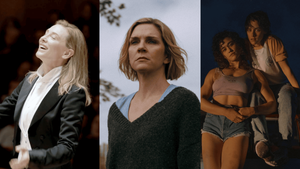
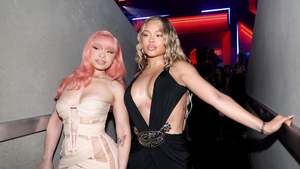






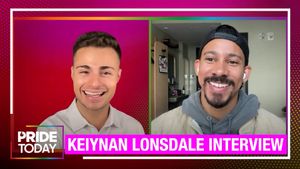






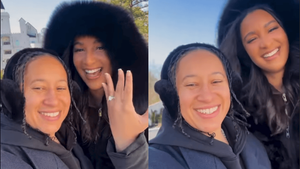


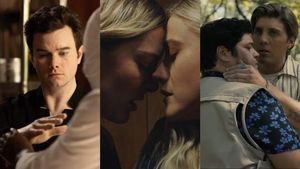
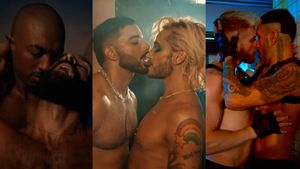








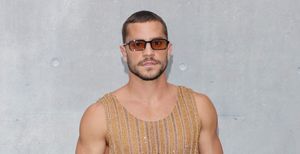
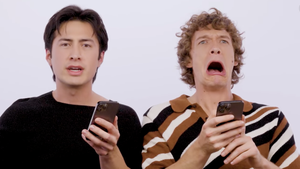

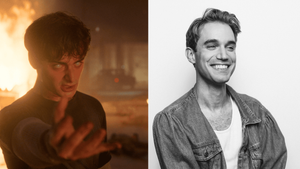

Charlie Kirk DID say stoning gay people was the 'perfect law' — and these other heinous quotes